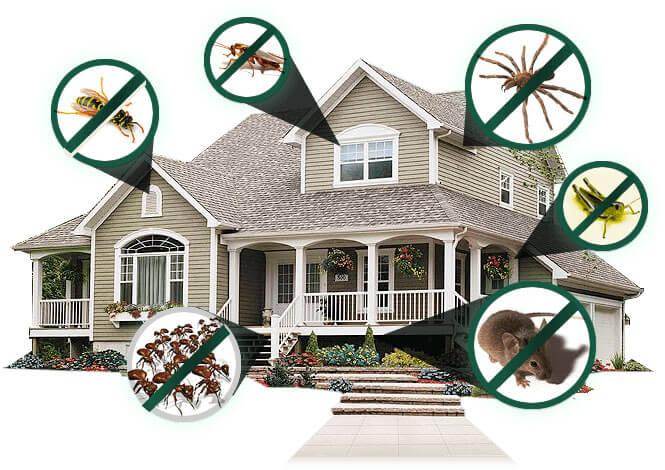Trusted A1 Bed Bug Exterminator Charlotte - Do Away With Bed Bugs Quick
Wiki Article
Bed Pest Therapy Malfunction: Contrasting Chemical Vs. Non-Chemical Solutions
In the realm of pest control, particularly when managing the relentless problem of bed bugs, the selection in between chemical and non-chemical treatment options can be a pivotal one. Both techniques supply distinct advantages and downsides, affecting aspects such as efficiency, safety factors to consider, and general cost. By examining the nuanced information of each method, a more clear understanding of which course to seek in addressing a bed bug invasion can be obtained.Performance of Chemical Therapies
Chemical treatments for bed bug invasions have been widely acknowledged for their quick and potent effectiveness in eliminating these insects. When thinking about the effectiveness of chemical therapies, it is critical to recognize that they can give a fast and detailed solution to a bed pest trouble. Expert pest control specialists often depend on insecticides to target bed bugs at various stages of their life process, consisting of nymphs, grownups, and eggs. These chemicals commonly function by interfering with the bed insects' nerve system, causing paralysis and eventual death.Additionally, chemical treatments have the benefit of providing recurring effects, implying that they can remain to get rid of bed pests also after the initial application. This recurring action is particularly beneficial in combating any possible re-infestations. Additionally, the quick action of chemical therapies can bring relief to individuals facing extreme bed pest invasions, allowing them to reclaim control of their home rapidly.
Safety Interest In Chemical Solutions
When using chemical options for bed insect therapy is making sure the safety and security of occupants and the environment,One crucial facet that requires mindful factor to consider. While chemical therapies can be effective in eliminating bed insects, they might pose risks otherwise dealt with correctly. One of the primary security interest in chemical remedies is the possible injury they can cause to human health. Exposure to certain chemicals made use of in bed pest therapies can cause breathing concerns, skin inflammation, or various other damaging responses, particularly in people with pre-existing conditions or level of sensitivities. Furthermore, inappropriate application or dose of chemical pesticides can cause harmful deposits remaining in the treated location, posing lasting health threats to occupants.Furthermore, the environmental impact of chemical solutions is one more considerable consideration. Some pesticides used in bed pest treatments may be dangerous to helpful insects, wild animals, and environments if they leach into the dirt or water supply. It is necessary to utilize chemical therapies carefully, complying with safety and security standards, and taking into consideration much less harmful alternatives to minimize these dangers and guarantee the secure and reliable management of bed pest problems.
Benefits of Non-Chemical Methods
Thinking about the potential safety and security issues and ecological effect connected with chemical remedies for bed pest treatment, discovering non-chemical methods offers an encouraging choice with several distinct advantages. Non-chemical approaches supply a much safer alternative for houses, particularly those with children, individuals, or pet dogs conscious extreme chemicals. These strategies get rid of the threats of direct exposure to hazardous compounds, minimizing the capacity for negative health and wellness impacts. Additionally, non-chemical treatments are environmentally friendly, as they do not add to air or water contamination, making them a lasting selection for parasite control.Additionally, non-chemical solutions can be effective in targeting bed bugs, including hard-to-reach areas where chemical treatments may not penetrate. Approaches such as warmth treatment, vacuuming, steam cleansing, and cushion coverings supply thorough eradication without using dangerous chemicals. Additionally, non-chemical techniques can be much less disruptive, requiring minimal preparation and permitting quicker reentry into treated areas. On the whole, selecting non-chemical bed bug therapy approaches not just prioritizes safety and environmental management yet likewise makes certain efficient and comprehensive bug control.
Limitations of Non-Chemical Treatments

In addition, non-chemical treatments often require multiple applications to accomplish successful eradication. This can be lengthy and may More Info not always ensure complete removal of all bed insects and their eggs, particularly in hard-to-reach or hidden locations.
Furthermore, the success of non-chemical therapies heavily counts on proper application and thoroughness, which can be Visit Website challenging for people without expert expertise. Poor application of non-chemical techniques might lead to incomplete removal, bring about consistent invasions and the need for additional treatments.
As a result, while non-chemical therapies have their benefits, it is essential to acknowledge these restrictions and consider them when establishing the most efficient method for taking care of bed insect infestations.
Cost Contrast: Chemical Vs. Non-Chemical Options
Offered the limitations linked with non-chemical treatments, an important element to assess in the context of bed pest management is the price comparison in between chemical and non-chemical options. In comparison, non-chemical treatments like warm treatment or vapor can be much more costly, with prices varying from $1,000 to $6,000 for an entire home. While the initial expense of chemical therapies might seem reduced, multiple therapies may be required to completely remove the infestation, potentially boosting the overall cost.Conclusion

Thinking about the potential safety concerns and environmental impact associated with chemical solutions for bed pest treatment, exploring non-chemical strategies provides an appealing option with numerous distinct benefits.Provided the constraints associated with non-chemical therapies, a necessary aspect to review in the context of bed bug monitoring is the cost contrast in between chemical and non-chemical choices. In contrast, non-chemical therapies like warmth therapy or heavy steam can be a lot more costly, with prices varying from $1,000 to $6,000 for an entire home. While the initial price of chemical therapies may appear reduced, several therapies might be required to totally eradicate the problem, possibly enhancing the general cost.In conclusion, when comparing chemical and non-chemical bed bug therapy options, it is crucial to consider effectiveness, safety, advantages, constraints, and price.
Report this wiki page